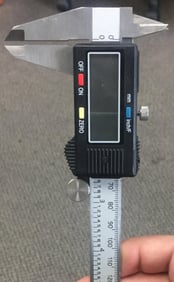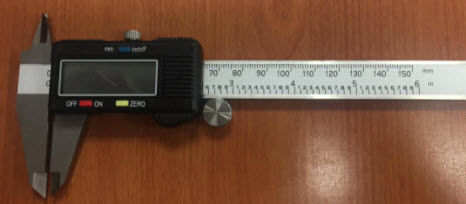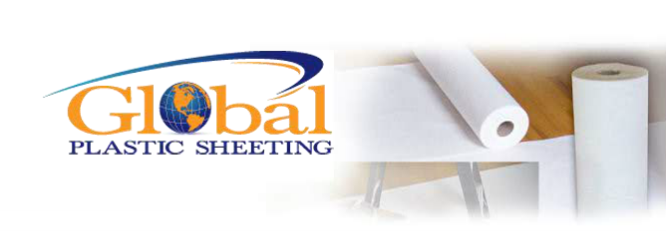Made in the USA Plastic Sheeting – Strength You Can Measure
At Global Plastic Sheeting, our materials are proudly Made in the USA using 100% virgin polyethylene resin, delivering consistent performance and superior durability across a wide range of applications. Unlike many imported products that rely on recycled or mixed plastics, our sheeting is BABA-compliant and engineered to meet strict American quality standards.
Why Buy American-Made Plastic Sheeting?
-
Build America, Buy America Act (BABA) compliant
-
Manufactured using virgin resin for higher strength and clarity
-
Avoids impurities common in foreign, recycled materials
-
Supports U.S. jobs and local manufacturing
-
Offers better quality control and material traceability
Whether you're sourcing plastic sheeting for a federal infrastructure project, an agricultural site, or a commercial build, American-made sheeting ensures your material meets the performance demands and compliance requirements.
Understanding Mil Thickness in Plastic Sheeting
When selecting the right plastic for your needs, mil thickness is a key factor. A mil measures one-thousandth of an inch (0.001 inch or 0.0254 mm). Despite sounding similar, mil is not the same as a millimeter—in fact, 1 mm equals roughly 39.37 mils, making it considerably thicker.
Common Mil Thickness Comparisons:
-
Everyday trash bags: 1.2 to 1.7 mils
-
Heavy-duty contractor bags: 3 to 6 mils
-
Credit card: ~30 mils
-
Deck of cards (with box): ~750 mils or 0.75 inches
Thicker plastic—typically 6 to 20+ mils—is preferred for more demanding jobs like vapor barriers, greenhouse films, and containment liners.
Composition vs. Thickness: Why Virgin Resin Matters More
While thicker plastic usually means stronger material, composition plays a critical role. For instance, plastic sheeting used in fire retardant applications must include chemical additives for flame resistance. In this case, thickness alone won’t guarantee protection—material quality and formulation are key.
Helpful Tools for Choosing the Right Sheeting
We provide resources to help you convert between mils, millimeters, microns, and inches—plus comparison tools and product filters to match thickness with your job specs. You can also request custom tarps with tie-downs, pipe loops, grommets, or fitted designs.
| mil |
mm |
inch |
Item |
| 1 |
0.0254 |
0.001 |
|
| 3 |
0.07619 |
0.003 |
|
| 6 |
0.152399 |
0.006 |
|
| 10 |
0.254 |
0.01 1/64 in |
|
| 15 |
0.381 |
0.015 |
|
| 20 |
0.508 |
0.02 |
|
| 30 |
0.762 |
0.03 1/32 in. |
Credit card |
| 60 |
1.524 |
0.06 1/16 in |
|
| 100 |
2.54 |
0.1 3//32 in |
|
How do you measure plastic sheeting in mils to know how thick it actually is?


A digital caliper is commonly used to measure the thickness of plastic sheeting, but measurements can vary if the plastic contains scrim reinforcement (a woven or non-woven grid for added strength). When measured over the scrim, the reading will be thicker than in areas without it, since the reinforcement adds durability and tear resistance. The term “heavy-duty plastic” depends on the application—a 6-mil sheet might be strong enough to protect a desk from dust but too weak for landfill lining. Strength isn’t just about thickness; the material composition, reinforcements, and additives all play a role. For example, plastic exposed to sunlight needs UV inhibitors to prevent degradation, while applications requiring extra toughness benefit from scrim reinforcement. Understanding these factors helps ensure the right plastic sheeting is chosen for the job.
How Plastic Sheeting Thickness Affects Performance
The thickness of plastic sheeting—measured in mils (one-thousandth of an inch)—plays a crucial role in determining how well the material performs for different tasks. Here's what you need to know:
Why Thickness Makes a Difference
Choosing the right mil thickness ensures your plastic sheeting is up to the job. Here's how thickness influences functionality:
-
Longevity & Durability: Thicker sheeting holds up better against punctures, abrasions, and environmental wear.
-
Load Tolerance: More robust plastic can endure heavier weights and demanding conditions without tearing.
-
Barrier Effectiveness: Increased thickness enhances protection against elements like moisture, dirt, and debris.
How to Determine the Right Mil Thickness
When selecting plastic sheeting, several practical considerations will guide your decision on the proper thickness:
-
Project Type: Whether you’re lining a pond, covering a greenhouse, or wrapping equipment, the application drives the required thickness.
-
Weather Exposure: Sheeting used outdoors—especially in areas with high sun, wind, or rain—often benefits from higher mil ratings.
-
Structural Support Needs: Projects requiring the material to carry weight or resist pressure call for heavier-gauge sheeting.
-
Chemical Compatibility: If the plastic will come into contact with chemicals or cleaning agents, the right formulation and thickness are both essential.
Popular Mil Thicknesses and Recommended Uses
-
4 Mil – Great for temporary or lightweight needs, such as dust covers, plant protection, or short-term furniture storage.
-
6 Mil – A solid all-purpose option for construction, landscaping, and greenhouse use.
-
8 Mil – Offers increased toughness for heavy-duty agricultural or contractor-grade applications.
-
10 Mil and Higher – Best suited for industrial tasks, long-term outdoor use, or custom liners that require maximum strength.
Making the Right Choice
Selecting the correct thickness means better results, longer lifespan, and fewer headaches down the line. From home projects to industrial-scale work, aligning your plastic sheeting thickness with your project's demands ensures it performs when you need it most.
Thickness
|
Plastic Sheeting Mil Thickness Uses
|
1-2 mil
|
Economical/ light duty protection for indoor painting • Covering equipment • pallets • furniture during painting
|
|
|
Self-Adhesive plastics for: Counters, Carpeting, Floors, Hardwood, Tile, Bath Tubs C&A Films: Painting, Covers (thickness equivalent is a plastic shopping bag)
|
|
|
Barge Liners/ Liners • Construction Enclosures • Temporary Erosion Control • Construction Enclosures • Remediation Covers
Temporary liners or Covers • Shipping and Packaging•Insulation Membranes • Curtains•Job Site Covers • Vapor Retarders • Lumber Covers • Cargo Wraps·Silage Covers • Greenhouse Plastic • Heat Shrink Wrap • Anti-Static Equipment Covers
|
|
|
Temporary walls, plant dividers, building enclosures and containment tents, Shipping container covers and liners, Floor covers, dust partitions and clean room enclosures, Pallet, cask and drum covers for outside storage, Pallet. Cable reel and drum covers for outside storage., Architectural vapor retarder in walls and ceilings and in roofing systems.
|
|
|
Pond/Canal Linings • Outdoor Coverings • Remediation Liners • Cargo Oil Field Pit Liners • Silage Covers• Unexposed lining applications Construction Enclosures • Vapor Retarders • Asbestos Abatements • Fumigation Covers•Insulation Membranes • Temporary Walls-Curtains • Job Site Coverings • Temporary Wall Remediation Covers• Temporary Erosion Control -Thickness equivalent would be 10 sheets of paper.
|
|
|
Daily Land fill Covers • Cargo Covering • Interim Landfill Covers• Remediation Covers or Liners • Outdoor Covers •Temporary Rainshed Covers
|
|
|
Protective Coverings for decks on Navy ships, Coast Guard Fleet, Megayachts, Commercial Flooring, Hospitals, Laboratories, Government Facilities, and Power plants.
|
15 Mil
|
Under-slab Vapor Barrier • Foundation Wall Vapor Barrier
|
|
|
Aquaponics liners • Vapor Retarders • Daily Landfill Covers • Interim Landfill Caps • Erosion Control Cover • Under-slab Vapor Retarders • Earthen Liners • Grain Storage
|
24 Mil
|
Hay Covers
|
|
40 Mil
|
Containment Liners • Oilfield Pit Liners • Fish Hatchery Liners • Canal Liners • Interim Landfill Covers • Outdoor Covers
Root barrier, pit liners, soil remediation, canal liner
|
World-class performance, made in the USA: Global Plastic Sheeting.





